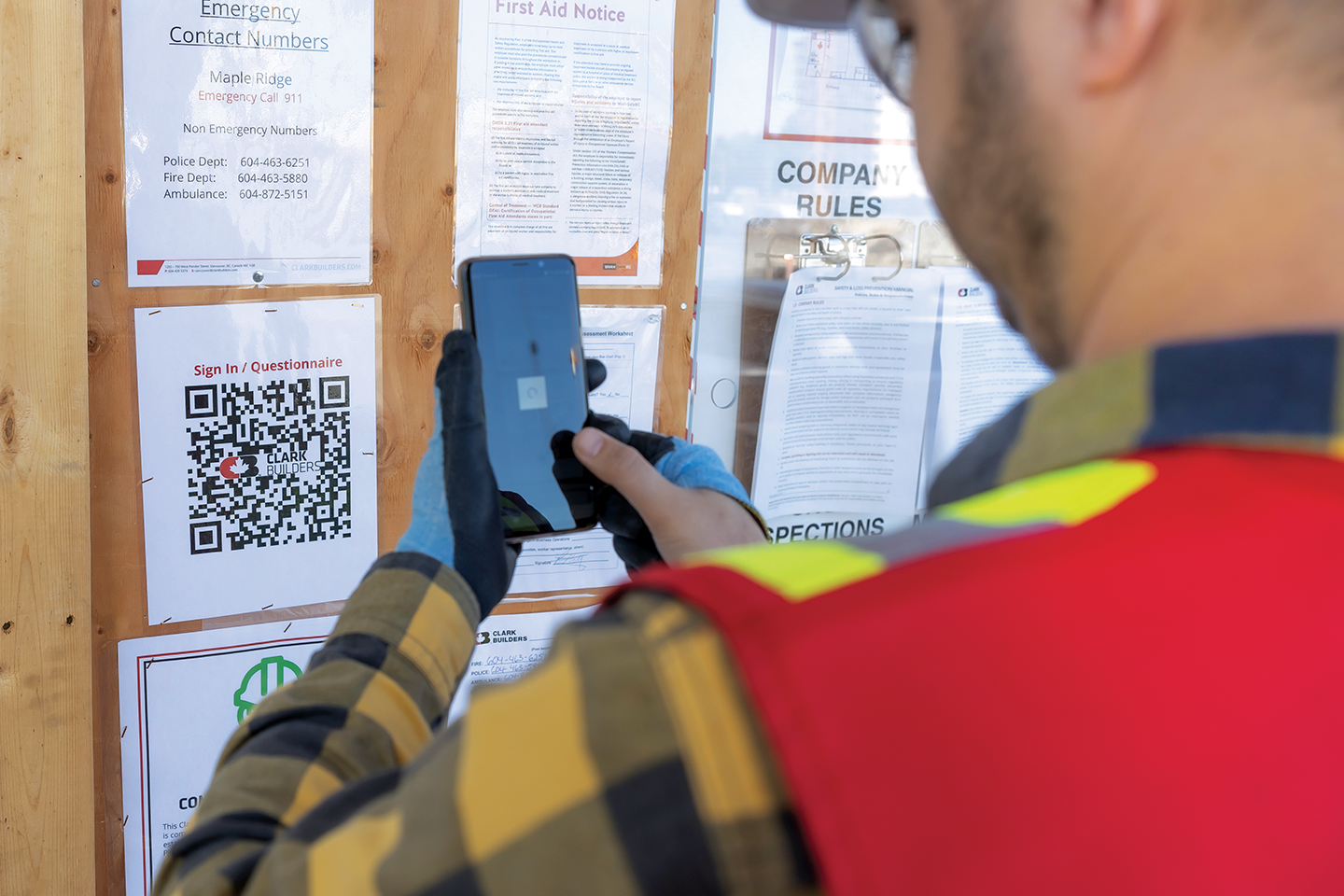Clark Builders: Putting the COVID-19 safety plan in place
Report your health with a QR code and a smartphone
In Vancouver, Edmonton, and Calgary, General contractor Clark Builders reacted to COVID-19 as soon as the first cases were confirmed in Canada in early March. "We tried to jump ahead of the curve," explains senior superintendent Wayne Macleod, based in Vancouver. "It’s not hard to implement a plan. And once you’ve got it going, it takes care of itself."
The early start paid off. "We haven’t lost a sick day," he says of the 40-person crew excavating and forming for a residential and commercial development in Maple Ridge.
To enter the site, workers scan a QR code with their smartphones to bring up a health questionnaire. If they list any symptoms, "an alert comes on my computer and we go out and check on our people."
The team is also holding project orientation outdoors rather than in the site trailer and is monitoring physical distancing. Wash stations and washroom trailers with hot water allow for frequent hand washing.
Personal protective equipment is also abundant. "Everybody has to wear gloves, even myself — a rule that is part of our regular personal protective equipment process. And we supply the N95 mask to anyone who needs it," Macleod says — including workers not on the Clark payroll. "We just want the work to continue and everyone to work safely."
The company also equipped first aid attendants with full face shields.
High-contact items like tools and door knobs are disinfected four times a day. And COVID-19 signage includes pictograms to help overcome language barriers for workers who speak little English.
Macleod says he used WorkSafeBC as a resource when dealing with the changing dynamics of the pandemic.
"I really appreciate the advice and openness," he says.
Jacqueline Spain, a WorkSafeBC occupational safety officer, says it’s the commitment from senior management that particularly helped Clark build a comprehensive COVID-19 prevention program. "They all believe in what’s going on there and trying to provide a safe workplace so workers want to be there," she says.
Read about what other employers have been doing to implement the COVID-19 safety plan in WorkSafe Magazine.

